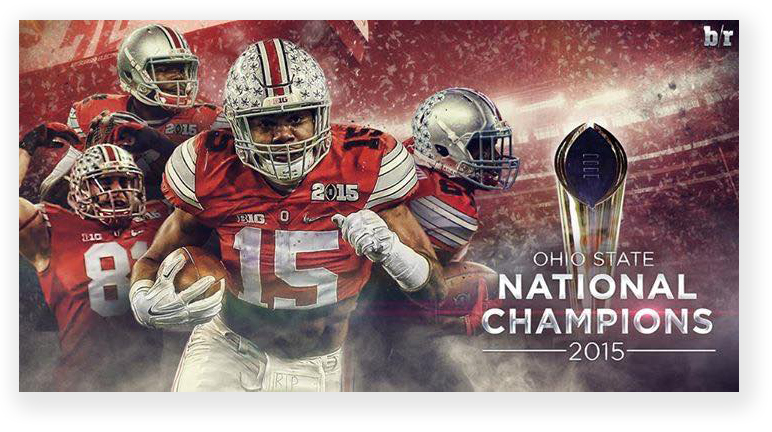We’re still doing a weekly newsletter … we’re just posting pieces of it every day. The news is fresher this way …
PRIOR HISTORY
 Mom was an English teacher, and she would have taken strong exception to the redundant expression “prior history.” Anyone who has enjoyed the eye-blurring and mind-numbing experience of online legal research is familiar with the phrase. “Prior history” is the label used for the record of what happened to a case before the decision on the screen. Unsurprisingly, “subsequent history” is sometime employed to describe the record of what went on with a case after the decision being read.
Mom was an English teacher, and she would have taken strong exception to the redundant expression “prior history.” Anyone who has enjoyed the eye-blurring and mind-numbing experience of online legal research is familiar with the phrase. “Prior history” is the label used for the record of what happened to a case before the decision on the screen. Unsurprisingly, “subsequent history” is sometime employed to describe the record of what went on with a case after the decision being read.
Still, it’s a grating phrase. History is by definition “prior.” History that is subsequent, or “future history,” cannot be history because it hasn’t happened yet.
This brings us to an all-too-common lament of inmate pro se litigants that, ignoring for a moment what happened when they either pled guilty or went to trial and had their heads handed to them, their convictions should be set aside because of some kind of grand jury error or another. As the 9th Circuit reminded everyone the other day, that’s “prior history,” and it hardly ever matters.
Defendant Jamie Harmon had been a criminal defense attorney. When her client – charged with selling stolen computers – thought his bank accounts were about to be seized, he gave Jamie over $100,000, which she put in her trust account and then doled back out to her client for his living expenses. She and her client were charged with money laundering.
Suffice it to say that the government arguably used perjured testimony at the grand jury to get Jamie and her client indicted. After the indictment, Jamie’s client turned on her, and he testified against her at her trial. She was convicted.
When Jamie later found out that the government helped its informant lie to the grand jury about why he was testifying (and about his paid status as a government informant), she argued that her conviction should be thrown out, because the perjury created a structural error in the grand jury process.
Jamie’s problem – one shared by countless inmates – was this: after a conviction, any error in the grand jury proceeding connected with the charging decision is deemed harmless beyond a reasonable doubt as a matter of law. It’s like Ohio State being picked for the NCAA Football Final Four in 2014. A lot of people complained it should have been Baylor or TCU.
But after the Buckeyes walloped Alabama and then rolled over Oregon for the title, no one had any basis for saying OSU didn’t belong in the top four.

Jamie may have been on the right track, but her train did not make it to the station. The 9th Circuit last week denied her post-conviction motion. It noted that “most constitutional errors can be harmless. Only in rare cases has [the Supreme Court] held that an error is structural, and thus requires automatic reversal. In the grand jury context, the only identified structural error to date is discrimination on account of race or sex in the selection of grand jurors. This error – which concerns the composition of the grand jury – is structural, as it ‘permeate[s] “the entire conduct of the [proceeding] from beginning to end”,’ and cannot be ‘quantitatively assessed in the context of other evidence presented in order to determine whether [the error] was harmless beyond a reasonable doubt’.”
The Circuit held that neither the failure to correct false testimony affecting a witness’s credibility nor to disclose impeachment information falls into the narrow structural category that requires automatic reversal. The Court said “[d]ismissal of the indictment is not appropriate when a witness’ alleged perjury is not material to the defendant’s indictment and instead affects only the witness’ credibility.” The appellate panel believed that the witness’s lies about his motivation for testifying “was not structural because it is an error susceptible of quantitative assessment to determine its effect, and therefore suitable for harmless error analysis.”
The Court was undoubtedly swayed because the witness who lied about his motives before the grand jury did not testify at Jamie’s trial. In other words, the government proved her guilt beyond a reasonable doubt without the tainted testimony. It would have been considerably more interesting if the grand jury witness had lied in material parts of his testimony, but had not testified at trial. There, the 9th Circuit suggests, the error may have been structural. A decision on that, however, must await another day.
For now, once a defendant is convicted, whatever happened before the grand jury is prior history.
United States v. Harmon, Case No. 15-10034 (9th Cir. Aug. 18, 2016)

